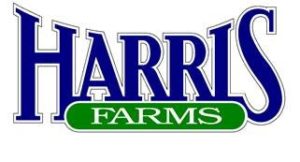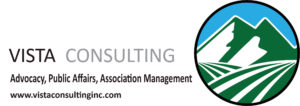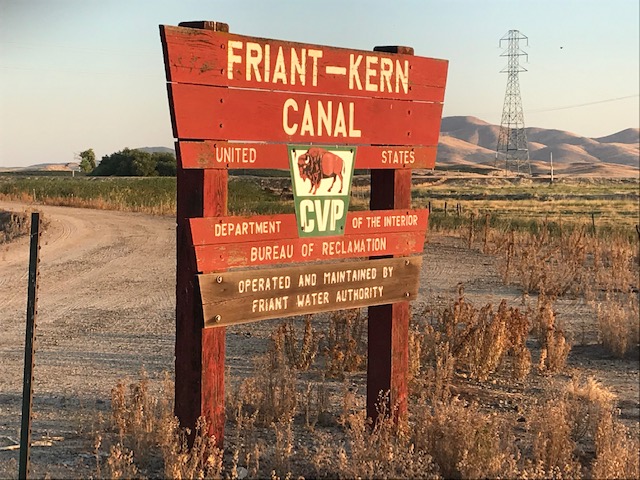 The Friant Water Authority held its board of directors meeting remotely from Visalia on Thursday, October 22, 2020 by Webex. Friant’s staff and management provided a downloadable pdf of the meetings agenda and the public portion of the board packet. The meeting was scheduled to start at 8:30am for closed session. FWA Attorney Don Davis was slated to discuss three existing cases of litigation: NRDC v. Murillo – this was the Natural Resources Defense Council’s lawsuit to bring salmon back to Friant Dam. David Murillo was the former Regional Director of the United States Bureau of Reclamation. Last I heard it costs the taxpayers about $2.5 million per fish so far. Good job NRDC. The existing cases of litigation are the California Natural Resources Agency v. Ross and the Tehama-Colusa Canal Authority v. DWR.
The Friant Water Authority held its board of directors meeting remotely from Visalia on Thursday, October 22, 2020 by Webex. Friant’s staff and management provided a downloadable pdf of the meetings agenda and the public portion of the board packet. The meeting was scheduled to start at 8:30am for closed session. FWA Attorney Don Davis was slated to discuss three existing cases of litigation: NRDC v. Murillo – this was the Natural Resources Defense Council’s lawsuit to bring salmon back to Friant Dam. David Murillo was the former Regional Director of the United States Bureau of Reclamation. Last I heard it costs the taxpayers about $2.5 million per fish so far. Good job NRDC. The existing cases of litigation are the California Natural Resources Agency v. Ross and the Tehama-Colusa Canal Authority v. DWR.
The Friant board was also going to hear about two potential cases where there is exposure to litigation and one case where FWA may want to sue. The two items are a real estate negotiation between FWA and the Bureau having to do with a cost share agreement with the Bureau and the public employment portion with noting in the agenda listed but a citing of the Government Code Section (54957 if you’re wondering) and the words “Title: Chief Financial Officer.” No one ever calls me up and gives me the scoop on what’s going on it closed session. I really wouldn’t want them to for many reasons. Hint; closed sessions can be tedious plus they are necessary part of running an organization effectively. But having seen Friant’s CFO Don Willard in action for a few years now I don’t think he’s up for anything more drastic in closed session than a raise. In other words Willard sure seems to be doing a good job.
The Open Session
The open session of the FWA meeting was scheduled to begin at 10:00am. Chairman Chris Tantau called it at 10:33am. His report from closed session was nothing happened worth reporting. Director Cliff Loeffler lead the crew in prayer. He asked the Lord for peace, wisdom and direction. Amen. The first two items were public comment and the consent calendar which consisted of the approving the minutes and paying the bills. There were no public comments and Tina Marie polled the board for the consent calendar and it passed.
The first big lift of the meeting was a public hearing for the, “Approval of Resolution 2020-03 Certifying the Final Environmental Impact Statement/Report, Adopting CEQA Findings of Fact and a Statement of Overriding Considerations, Adopting a Mitigation Monitoring and Reporting Program, Approving the Canal Enlargement and Realignment Project Alternative, and Approving the Implementation of the Friant-Kern Canal Middle Reach Capacity Correction Project.”
Attorney Davis gave the board the lowdown. He said the first conference call on the subject had more than 20 people from the Bureau and Stantec Engineering and of course Friant. He was concerned not much could get accomplished with that many voices. But he was pleased to report everyone worked hard to reach this milestone.
Heather Waldrop of Stantec gave the board her presentation of how the EIR was developed to this point. Both CEQA and NEPA were covered. There were more than a dozen people on the team with FWA the lead agency for CEQA and the Bureau was lead agency on NEPA. She said CEQA’s basic purpose is disclosure of the project details to the public and any reasoning for the results.
There was a range of options evaluated from no action to redoing the Friant Kern Canal. NEPA and CEQA require an analysis of what would happen with no action taken. Of course everything goes to heck from spills at Millerton Lake to farms going bust. One option was to raise 13-miles of the canal and realign 20-more miles of the canal. The later would take four years or so to build. Raising the canal would require the footprint to be wider and the realignment would be a second channel. Another alternative was to just widen the stuffing out of the canal.
The problem is the land underneath the FKC at about the Tulare/Kern County line is sinking due to subsidence. There are roads, bridges, power lines, all manner of items along the way that will be impacted.
Under NEPA a Record of Decision is needed and under CEQA a Notice of Determination is needed. So, there are RoDs and NoDs required to go forward. Another term often encountered in this process is a Neg Dec – a negative declaration meaning going forward with the project won’t cause any harm that can’t be mitigated for the most part.
Waldrop said the proper public outreach was used starting with a scoping meeting in Porterville. A public comment period was observed and other agencies impacted by this project were invited to become cooperating agencies. There is a plethora of impacts that have to be evaluated from wildlife to noise to cultural and tribal cultural resources. Since the canal itself is considered a cultural resource that house of mirrors had to be examined. Some farmland designated as important, about 500 acres will be taken permanently out of production. Emergency vehicle response time could be impacted by more than 14-minutes during construction. I don’t know how 14-minutes is the trigger time but it sounds like that’s what it was. Today the board was asked to adopt the EIR and the findings and a statement of overriding considerations and mitigation monitoring/reporting program. The board will approve the project.
Davis said changing the canal under culture is a no brainer and unfortunately the loss of farmland will occur but the cost benefit justifies it and the transportation issue can’t be mitigated. He said there may be changes to the project overtime and that may require additional CEQA reviews. This is common.
The board was invited to question or comment on the process. There was no response so the public hearing was opened. Geoff Vanden Heuvel of the Milk Producers Council comments the work has been outstanding and urged the board to vote yes. That was a good indicator of public support. Eric Quinley, General Manager Delano Earlimart ID said as a downstream contractor it is very interested the outcome. He is concerned about selling capacity as a funding source and future opening of the CEQA due to changes. He said the schedule is unrealistic and driven by political concerns. He said there are yellow flashing lights on funding, lack of consensus and the piecemeal design. Quinley said the High Speed Rail project is an example of poor consequences yielding poor impacts. His sorry to have to make these comments in public but DEID has concerns. Dana Munn, GM Shafter Wasco ID wanted to say something but couldn’t unmute. Both DEID and SWID are not members of FWA but are FKC contractors. Tantau asked for SWID to forward comments since there is a technical problem.
The public comment section of the hearing was closed and Davis said he disagrees with Quinley’s opinion there are fatal flaws in the process. He was confident the procedure has been followed properly and future changes are more than adequately covered. He said staff is prepared to move forward and recommends approval. Section Five of the document was brought up and staff recommended removing it from today’s proceedings. Quinley asked if that action altered the approval of the EIR or the project – if I understood correctly. I didn’t understand the question and even Davis asked him to repeat it. Nor did I understand Davis’ response. On a side note Munn was able to enter an email stating SWID’s support of DEID’s comments. In any event the board approved. Marie polled all the Friant contractors on the call whether or not they were FWA members. The non-members didn’t support this. I didn’t hear one of them vote in favor.
Action Items
FWA CEO Jason Phillips reminded everyone there will be a retreat next month where all Friant contractors will be asked what they want from Friant. He said staff wants lots of note from participants.
There were five action items listed on the agenda. The first one has to do with a funding agreement between Friant and the San Luis Delta Mendota Water Authority for rewinding the pumps at the federal Central Valley Project Jones Pumping Plant near Tracy.
Many years ago when pterodactyls still soared above the Valley floor Friant Dam, the Friant Kern Canal and the Madera Chowchilla Canal were built. This resulted in less flows down the San Joaquin River which necessitated building the Delta Mendota Canal and Jones pumping plant to provide water to the areas that had been getting SJR water. Part of the trade off included the newly formed Friant Division of the CVP to help pay for the Operations & Maintenance of the San Luis Division of the CVP, which includes the pumps. These are big pumps designed to run like charging rhino. It takes a good deal of torque to get them up and spinning. They were built to spin. Now with the every changing regulatory requirements the pumps are stopped and started often and it wears them out. There are five pumps at the Jones plant and they have to have their copper coils rewound. I think this also includes installing a VFD system – Venereal Frequency Disease – I mean Variable Frequency Drive so the pumps won’t take such a beating every time they start and stop. This is expensive, in the millions of dollars per pump.
The SLDMWA has been looking at different ways to pay for the rewinds and has come up with the idea of issuing bonds for $12.4 million. Friant wants to pay its share upfront and get out from any long term debt from that project as it has its own multi-million-dollar canal repair to deal with.
Phillips said SLDMWA needs some assurance to give to the bonding deal makers, the investors, so Friant has been asked to enter into an agreement to the financing. It was pointed out Friant paying cash upfront will raise the costs for the other SLDM members. There was a special SLDM meeting yesterday that Phillips joined. SLDM wants Friant to pay extra to reimburse the other members for the extra costs and of course Friant doesn’t dig that idea.
Phillips recounted the situation for the board and showed the amended agreement on the screen. Friant’s share will come to 40 percent with the stipulation that a true up will return the money to FWA and other O&M participants along the FKC. That 40 precent was a little higher than Friant’s usual share and was arrived from a 10-year rolling average if I understood correctly. And if I understand correctly Friant will still save a trash can full of money by not getting tied up in bond fees. If there is a change order FWA will pay a proportional amount. There is a non precedent setting MOU to resolve disputes. FWA will make three payments over the course of projects. Jason, his staff and the Executive Committee recommended approving the agreement.
Quinley asked if the extra cost to SLDM was due to the smaller bond. Phillips said yes and gave some other calculations dealing with a quarter point higher interest rate over 25-years. Quinley thanked Phillips for keeping the contractors out of that mess. He said just because other agencies can’t get as good a rate as Friant doesn’t mean Friant should have to pay more. The board approved.
Next was an audit report followed by the annual investment policy review. Willard lead the board through a review of the financial statements. He said there is a need for a corrective action and Joe Mastro, CPA was invited to give an auditor’s report. Mastro wasn’t able to unmute. The board accepted the audit. Friant has about $9 million earning what Willard referred to tongue in cheek as the substantial point something interest LAIF gives. Local Agency Investment Fund – a special fund for special districts.* Director Edwin Camp asked is there is a need for a consultant to help with interest. The answer understood to be not really. LAIF is liquid and Friant’s charge doesn’t include operating as a financial entity. Director Kent Stephens asked if the state could raid LAIF funds. I’ve heard this concern for as long as I’ve been covering water and that is telling. The state doesn’t operate in a manner that provides security. The board approved the report.
Also noted was the purchase of $279,702 worth of herbicide to fight aquatic weeds. That board had to OK an expenditure of that big an amount and instructed staff not to spill any. Despite what some folks trumpet farmers don’t abuse chemicals.
There was also a cost recovery agreement with Tulare County to reimburse it for its staff time spent on the FKC repair project. Davis said this is another facet of what has to be accomplished to get the FKC repairs up and running. He said the next step is an MOU with the county. The board agreed to enter into the agreement and then it will go to the Tulare County Board. This is looking to be a $400,000 bill.
Reports
The first report was the repairs on the FKC. Phillips said the effort going into repairing the FKC has been unique. He comes from a career with the Bureau and has seen how fragile a project like this can be. He said all the entities including his staff who have been working on this has worked without rest, avoiding the temptation to delay and derail and not a step has been skipped. He said but for the funding challenges he doesn’t see the red flags others do.
Next the topic was funding and even though the meeting is into its fourth hour Phillips pointed out we’re already on page 114 of 171 in the packet. Phillips also made a statement that surprised me a bit. Not the sentiments expressed but expressing them out loud in a public meeting. He said all of the beneficiaries (non FWA Friant contractors) voted to not adopt the EIR and that dampens the enthusiasm. That’s not exactly how he put it but I feel that is close. He stated and I agree with him, the project itself is vital, its just the funding that is causing hick ups.
Friant used to be the Friant Water Users Authority. It then split into the FWUA and the current FWA. It then trifurcated into the FWA, the Friant North Alliance and the South Valley Water Association. The Friant North group dissolved and the members melded back into the FWA fold. The South Valley group is still separate. A couple of the initial members rejoined FWA but the contractors who have stayed with South Valley are the ones who voted no on the EIR. So, that’s some of the history, by all means not all the history, behind this.
Phillips said FWA needs $100 million to start construction on Sections D&E and that would increase the canal’s capacity to the original 2,500 cfs. How to get this started? There are a few options being pursued; a cost share agreement with the USBR. A repayment agreement with the USBR. Some non-reimbursable federal funds from the WIIN Act. The Eastern Tule GSA is ground zero for subsidence and Friant is pursuing ETGSA to pay for at least part of the repairs. There are other GSAs in the Tule Sub Basin identified as covering land responsible for the subsidence. And a WIFIA loan was listed.
Friant has proposed a three tier “Zone” structure to raise funding. In the Zone One deal nothing happens. In Zone Two the minimum 2,500 cfs capacity has been expressed as the preferred amount. Zone Three is the plan that allocates canal capacity to “investors”. Only Friant contractors can invest but they can get their money from private enterprise or other sources. That has made a lot of folks very uneasy. In order to get the funds flowing staff has proposed some early agreement incentives.
Phillips said if a Zone Three district provides a loan to repairs to 2,500 cfs or more by February those districts will be repaid first; before Friant or anyone else. Provided there is enough funds to do so. So, if the district isn’t paid back within three years it will continue to receive reimbursement at two percent for the next 10 years. Or the district could convert to a permanent Zone Three capacity. It’s very much more complicated than what I just attempted to describe. There were a few questions for Phillip and what I heard is if the response is better than expected the capacity can be expanded to Section F. By the way it cost $10 million to get 50 cfs. There was a question of what happens if there are more opportunities than capacity. It can either become a bigger project or the available capacity will be equitably prorated within Friant participants.
Someone who has been speaking with the GSAs said it is unlikely the GSA or GSAs will be able to meet the three year payback schedule and proposed a more realistic five year schedule. I was interested in how much the GSA amount would be but they are still negotiating no one was talking out of school today.
Quinley said his board isn’t interested in selling off any capacity on the canal in perpetuity and although DEID isn’t privy to the GSA negotiations he wants to ensure historical operations. Phillips said to do it historically then everyone has to pay into the historic O&M pool. He said he expects more objections from Friant and San Luis Delta Mendota because the Bureau is no longer forcing contractors to do things. Phillips said one of the issues brought up at yesterday’s SLDM meeting is the need to develop new policy so each time something happens with O&M the CVP contractors don’t have to chase their tails.
Fergus Morrissey, GM Orange Cove ID said his board doesn’t want Zone Three to take place below 2,500 cfs. He said a letter was sent to FWA to that effect. Camp said Arvin Edison WSD would like the 2,500 cfs to be shared by everyone but not everyone wants to pay. That leaves the downstream districts in a bad place to work out any final plan to continue their operations with some certainty. He said waiting around isn’t an option for farmers. He asked the districts who aren’t willing to pay to fix the canal what they want. He said you don’t want to pay but you don’t want incentives to those who do.
Phillips said it was mentioned this process is being driven in part by politics. And that is true to a degree. There will soon be an election and a new administration may not see this as a priority. That’s one of the advantages of FWA driving this instead of the Bureau. But he said there are many issues that could take more time and way more than just a month or two or three and could end up costing a great deal of money and support.
Director Eric Borba said the key is a Zone Two loan, not a minimum 2,500 cfs capacity. He said if Porterville ID buys into less than 2,500 cfs loan Orange Cove ID can buy it out. Camp asked Morrissey if he’d take the risk if his district was downstream and Morrissey said yes it would take the risk if he were downstream. Someone asked Phillips what his takeaway was from this discussion. Phillips said it will not be as easy to craft a plan everyone is happy with but he thinks it can be done. Someone else spoke up and I don’t know who it was but he said something like it isn’t staff’s responsibility to make a decision, he reminded everyone it was the elected officials sitting on the board to get this done.
Next Phillips spoke about the Central Valley Project Improvement Act Business Practice Guideline updates. One of the issues was the reimbursement policy. He said some of the environmental groups have tried to block clarifying the interpretation of what the often over complicated, confusing and contradictory language.
Johnny Amaral announced Alex Biering couldn’t attend the meeting because she’s in the hospital with her father and needs our prayers. Amaral asked Mike Villines to give his report. Villines said he would like the folks in Sacramento and Washington to see how hard the folks in the San Joaquin Valley are working to solve problems. He said a few more  things about the state budget but said there won’t be much to talk about until after the elections.
things about the state budget but said there won’t be much to talk about until after the elections.
Phillips said there is a bit of a riff forming over SB 559. There are actually ag commodity groups who oppose passage. There are others in the water community who are opposing any funding unless everyone gets funding. Phillips said Friant supports funding on the Delta Mendota Canal and the California Aqueduct if it doesn’t impact Friant. This all or none isn’t helping. Amaral said this is a call to action around the table as everyone present is a member of some group. There will be a post-election session at the retreat.
Austin Ewell gave his report saying the Uncommon Interests symposium at Stanford University has been paying dividends for the San Joaquin Valley Water Blueprint.  Participation with DACs has improved and GSAs in the Valley have been asked to submit projects that could be a part of the Blueprint. Phillips said this has an incredible long-term benefit to the Valley. Taking it down to the local level has been good to bring things home.
Participation with DACs has improved and GSAs in the Valley have been asked to submit projects that could be a part of the Blueprint. Phillips said this has an incredible long-term benefit to the Valley. Taking it down to the local level has been good to bring things home.
Ian Buck-Macleod gave a mercifully short report saying the three month weather outlooks aren’t shinny happy but there is still a chance for a normal water year coming up. He said the Cooperation Operations Agreement renewal has had its benefits also for supplies. He said the Creek Fire impacts are still being tracked. A proration was avoided and So Cal Ed is on track for operations in November. There’s the potential for a lot of debris and sediment flows from the fire but I’ve heard this might not be too bad. The upper SJR has a long canyon that could act as a flocculation area. Upstream from Millerton Lake there could be more problems. The runoff models need to be adjusted.
COO Doug DeFlitch reported the new board room will be ready by the end of the year. If I heard right that was the verbal O&M report.
Phillips gave his report saying he was instructed to make this meeting last as long as possible until a quorum was lost to provide training for the upcoming retreat. He also announced Willard will be leaving Friant next year and he’s been working to get things ready for that transition.
Well the meeting started this morning in closed session at 8:30am. Chairman Tantau called it adjourned at 2:30pm. That’s six hours. This was one of the longest meetings I’ve attended since the China virus for sure but I only remember one other meeting taking longer. I once had to sit through a nine hour meeting. That included six or seven hours of closed session where I had to wait in the breakroom. I had scheduled a lunch meeting because Friant only usually takes two hours. It worked out because the person I was meeting had to cancel.The meeting is over and yet I keep typing more sentences. I have to stop now, seriously. I have to sto . . .
DISCLAIMER OF RESPONSIBILITY; Waterwrights strives to provide its clients with the most complete, up-to-date, and accurate information available. Nevertheless, Waterwrights does not serve as a guarantor of the accuracy or completeness of the information provided, and specifically disclaims any and all responsibility for information that is not accurate, up-to-date, or complete. Waterwrights’ clients therefore rely on the accuracy, completeness and timeliness of information from Waterwrights entirely at their own risk. The opinions expressed in this report are those of the author and do not represent any advertisers or third parties.
most complete, up-to-date, and accurate information available. Nevertheless, Waterwrights does not serve as a guarantor of the accuracy or completeness of the information provided, and specifically disclaims any and all responsibility for information that is not accurate, up-to-date, or complete. Waterwrights’ clients therefore rely on the accuracy, completeness and timeliness of information from Waterwrights entirely at their own risk. The opinions expressed in this report are those of the author and do not represent any advertisers or third parties.
*When special districts were young did they have to ride the short bus to school?
ALL RIGHTS RESERVED. Copyright 2020 by WaterWrights.net/DAW
FRIANT WATER AUTHORITY
854 N. Harvard Ave., Lindsay, CA 93247, Office 559/562-6305 Email: information@friantwater.org www.friantwater.org
The Friant Water Authority is a Joint Powers Agreement with 15 districts to operate and maintain the Friant Division of the Central Valley Water Project. Water from the San Joaquin River is diverted at Friant Dam at Millerton Lake to the Madera/Chowchilla Canal to the north and the Friant/Kern Canal to the south. More than one million acres of mostly family farms and numerous communities get their surface supplies form the Friant Division.
Staff: CEO Jason Phillips, COO Doug DeFlitch, CFO Don Willard, Government Affairs & Communication Alexandra Biering, Water Resource Manager Ian Buck-Macleod, Superintendent Chris Hickernell and Attorney Don Davis.






























